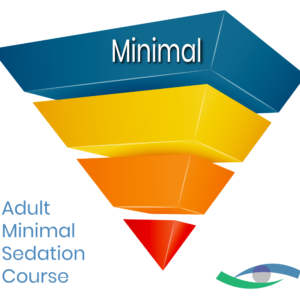NPO Guideline Update: Patients on
Ozempic &Similar Drugs Pre-Surgery
Safety isn’t just a box to check, especially if it involves delicate medical procedures like surgery. Invasive procedures carry inherent risks. Not only that, sedation adds a layer of complexity that requires careful consideration and adherence to established guidelines.
This brings us to a new NPO guideline update, which suggests treating the stomach as “full” if the patient is on medications like Ozempic. What exactly does that mean for sedation practices? Here’s what you need to know to safeguard your patients:
Understanding GLP-1 Receptor Agonists
Glucagon-like peptide-1 (GLP-1) receptor agonists, like Ozempic and similar drugs, are primarily prescribed for managing type 2 diabetes. They stimulate insulin production, reduce blood sugar levels, and slow gastric emptying. But their benefits don’t stop there; they’re often recommended to patients struggling with obesity because they’re effective medications for weight management.
The Risks & Concerns with GLP-1 Agonists & Sedation
The benefits of GLP-1 receptor agonists are significant, but they come with potential risks during surgery. Medical experts caution that anesthesia can increase the likelihood of regurgitation and aspiration due to the delayed gastric emptying caused by these medications. Aspiration happens when stomach contents enter the lungs and may cause serious complications like pneumonia or respiratory failure.
As a precaution, patients taking these medications are considered to have a “full” stomach, even after fasting. This also means that patients on GLP-1 agonists should be mindful of how they time their meals and how they schedule their medication to minimize risks.
ASA Recommendations for Elective Surgery
According to the ASA guidelines, medication timing is crucial in minimizing risks. Here’s what they recommend:
For Patients on Daily Dosing
Stop taking the GLP-1 agonists at least one day before the procedure. This helps ensure the stomach is as empty as possible during surgery.
For Patients on Weekly Dosing
As a rule, stop taking the medication at least a week before the scheduled procedure. This longer lead time accounts for the drug’s extended half-life.
For Diabetic Patients whose Medications are
Held Longer than Usual
If GLP-1 agonists are stopped for longer than the patient’s typical dosing schedule, consult an endocrinologist to bridge the gap and avoid hyperglycemia. An alternative antidiabetic therapy might be needed to keep blood sugar levels in check.
The National Sedation Center’s Commitment
The National Sedation Center’s key takeaway for you is always going to be a focus on Prioritizing Patient Safety. When managing patients on GLP-1 receptor agonists, it’s essential to follow the ASA guidelines to minimize the risk of complications during sedation. Treat the stomach as “full,” hold medications as recommended, and be vigilant about gastrointestinal symptoms.
Your diligence in adhering to these NPO guidelines will ensure the highest standard of patient safety and reinforce the importance of adult moderate sedation in your practice.
At the National Sedation Center, we know that it is important to understand all of the levels of sedation and the many things that could cause complications to sedation. National Sedation Center Courses are a great way to gain and maintain certification in Minimal & Moderate Sedation.






